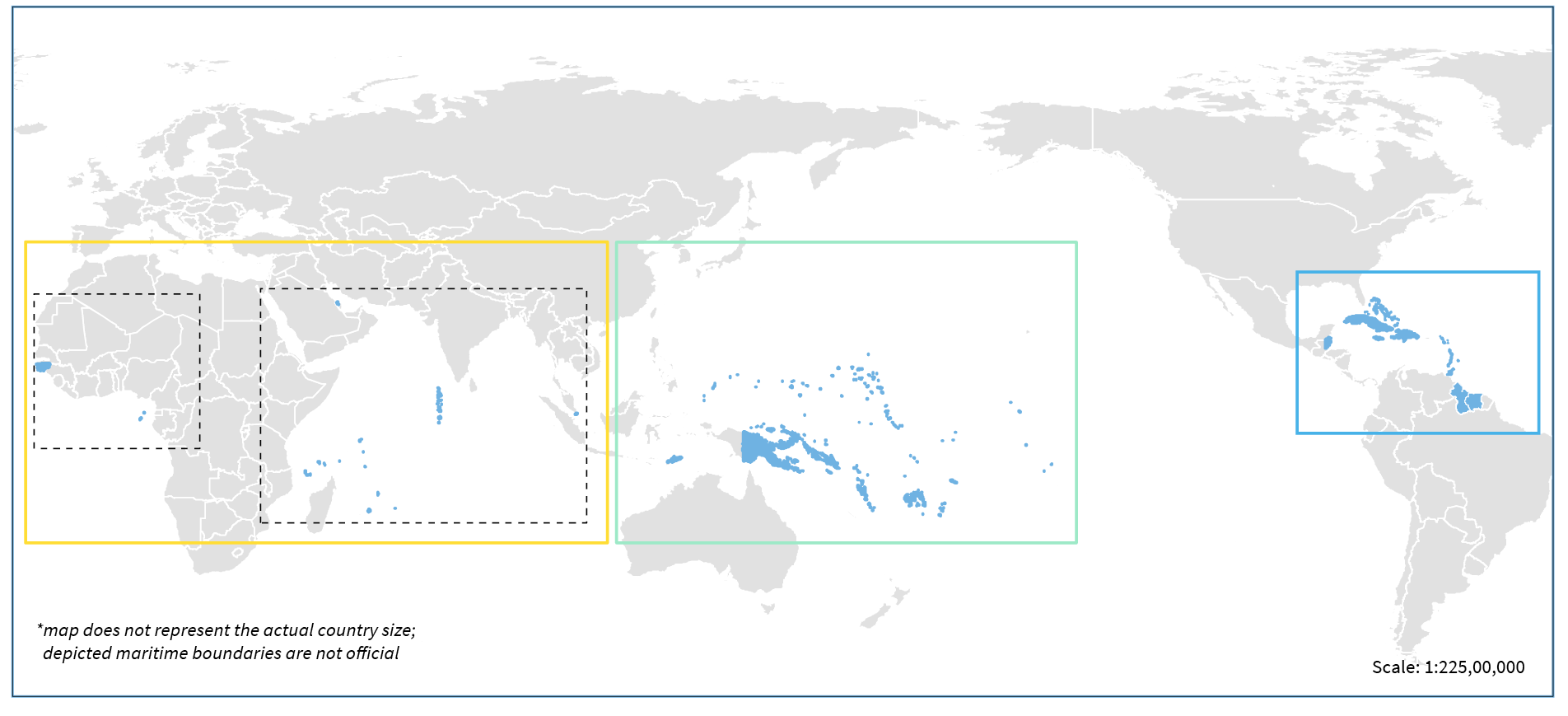Workstream 3:
Capacity Building & Knowledge Management
Develop capacities of all stakeholders to guarantee a broader understanding of Climate and Disaster Risk Finance and Insurance, with comprehensible information easily disseminated through user-friendly knowledge-sharing platforms
Disaster Risk and Readiness Insurance Solutions in Small Island Developing States
By United Nations University – Institute for Environment and Human Security & InsuResilience Secretariat
In addition to slow onset events, particularly sea level rise, Small Island Developing States (SIDS) face extraordinarily high risks from climate change hazards. Climate-related extreme events and natural hazards (e.g. tropical cyclones and storms, storm surges, floods, droughts and earthquakes) impose a heavy burden on vulnerable communities, marine and terrestrial ecosystems, livelihoods, major economic sectors and national budgets. They also impede sustainable development in many small islands, including SIDS.
It is crucial to understand and address the needs and the diverse risk environment of SIDS in order to provide Climate and Disaster Risk Finance and Insurance (CDRFI) solutions that are well-tailored to needs. The basis for such a thorough needs assessment lies in the accessibility and reliability of climate-risk data. However, this data is still scarce in the most vulnerable countries.
The latest InsuRisk Special Report aims to give deeper insights into current environmental and development challenges, alongside needs for CDRFI instruments in SIDS and their status. The report offers transparent and comparable baseline information on countries’ climate and disaster risks and their readiness to accept risk transfer through insurance solutions. The nuanced knowledge gains provided in this report can also guide and focus the international community as it seeks to identify where the strongest needs are located and where coping capacity needs to be enhanced.

Key findings of the report feature:
- Information on climate and disaster risk at national resolution as presented in this report is useful for providing a better understanding of the differences and similarities across SIDS. This permits identification of priority countries and ensures that certain high-risk SIDS do not fall under the radar. However, assessments at the sub-national and local scales are needed to enhance capture of the spatial variability of risk and inform targeted risk reduction and adaptation.
- Lack of current, publicly available, high-resolution data remains a challenge for many SIDS. Greater efforts are needed to systematically collect, manage, and provide relevant data and information on natural-hazards vulnerability, climate and disaster risk, and the development status of insurance markets.
- The perception of SIDS as “hotspots of climate change” that share a “common vulnerability to climate change” does not reflect the reality given that SIDS form a highly diverse and heterogeneous group of countries with varying levels of exposure and vulnerability to natural hazards.
- SIDS governments face specific challenges accessing and facilitating access to insurance solutions given their small geographic and market size. This makes insurance either unaffordable or unavailable as small countries often represent an unattractive proposition for the private sector. Regional approaches can help countries to access sovereign risk insurance that is appropriate to their needs. Such regional approaches may also be appropriate for increasing access to microinsurance for extreme weather through streamlining regulation and consumer education.
InsuRisk Assessment Tool
Climate-related extreme events and natural hazards continue to compromise lives, livelihoods and assets, notably of the poor and most vulnerable people. There is broad acknowledgement that solutions to prevent, prepare for, cope with and recover from catastrophic events are urgently needed. This is why the InsuResilience Global Partnership has been addressing the issue since its launch in 2017.
The InsuResilience Secretariat commissioned the United Nations University – Institute for Environment and Human Security (UNU-EHS) and Social Impact Partners (SIP) to develop an initial study in 2017 for preparing a comprehensive concept, methodology and tool that provides transparent and comparable baseline information on countries’ climate and disaster risks, and their readiness for risk transfer through insurance solutions.
The resulting InsuRisk Assessment Tool has been designed to provide answers to the following questions:
- What is the level of exposure, vulnerability and climate/disaster risk of a country?
- What is a country’s readiness to accommodate insurance solutions?
In order to provide answers to these questions, the InsuRisk Assessment Tool comprises two key components: (i) climate and disaster risk and (ii) readiness for insurance solutions.
The InsuRisk Assessment Tool does not indicate when a country might be affected by a disaster. However, it highlights the risk of being confronted with adverse impacts associated with climate-related and natural hazards.
One key innovation featured in the InsuRisk Assessment Tool is systematic analysis of a country’s readiness to accommodate insurance solutions. The overall readiness of a country consists of three modules:
- individual readiness,
- the enabling political environment capable of attracting the insurance industry, and
- the current development status of a country’s insurance market. A high level of readiness for insurance solutions therefore indicates how ready a country is to successfully implement insurance solutions.
